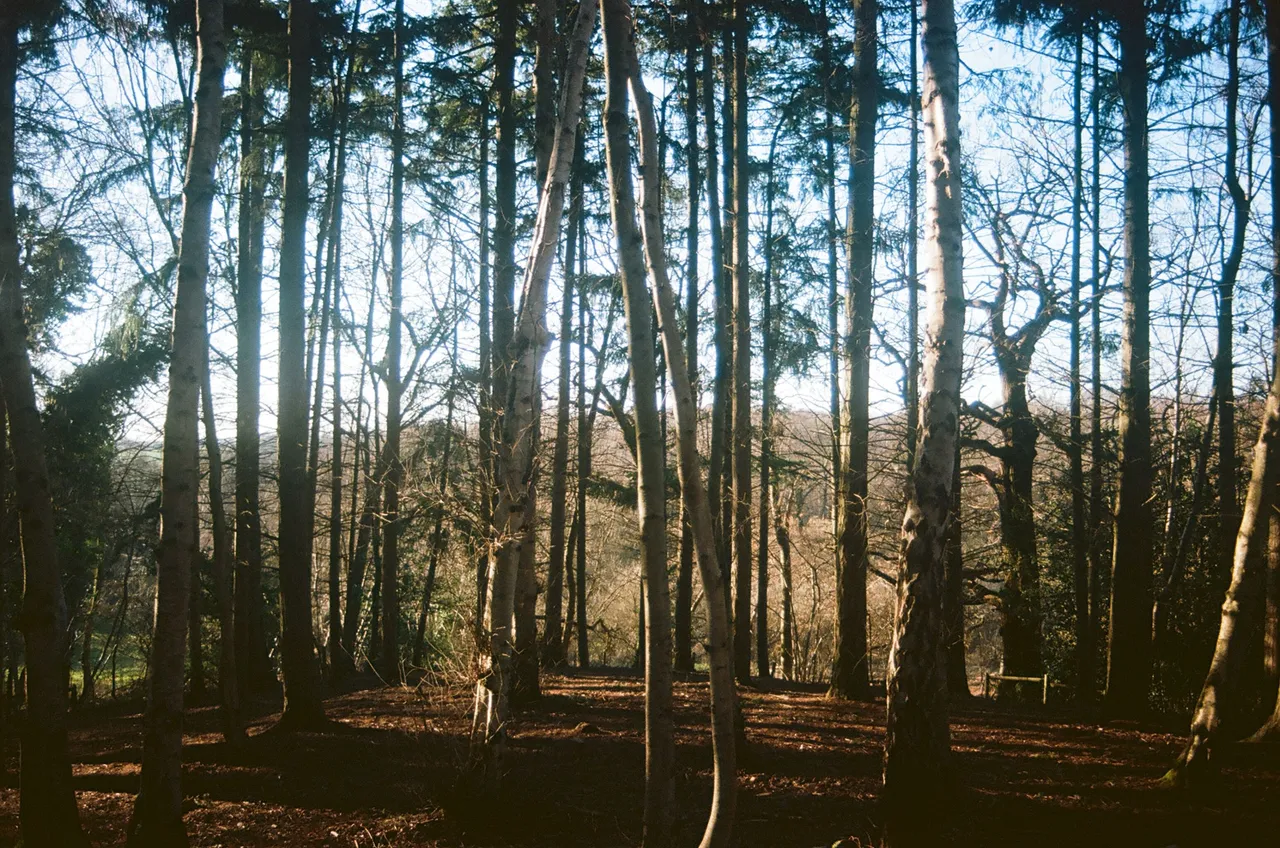
I recently managed to get 4 rolls of 35mm film developed that were shot over the last two years, most of which being in the first year of the pandemic. These rolls of film were already expired film stock: Kodak Pro Image 100. I had never shot this film stock before, nor had I ever shot expired film stock before, so my expectations of the quality were rather low for the most part.
It's hard to know how to shoot a film stock you've never tried before, since each film stock is created for a specific purpose: some are more sensitive to skin colours and are crafted more for skin colour accuracy, others are more for pulling out the colours of artificial lighting environments, and others are for landscapes.
Fortunately, with the Internet, you can easily find out what film stock is best for the intended situation you're going to be shooting. But where's the fun in knowing? I took these rolls out in a number of different locations, some snowy and white, some dark and a range of browns and greens. In this case, these were shot in a forest during autumn. Where the sun was just starting to descend and the colours on the ground were somewhat dim due to the overhead leaves from trees blocking much of the natural light entering the forest floor.
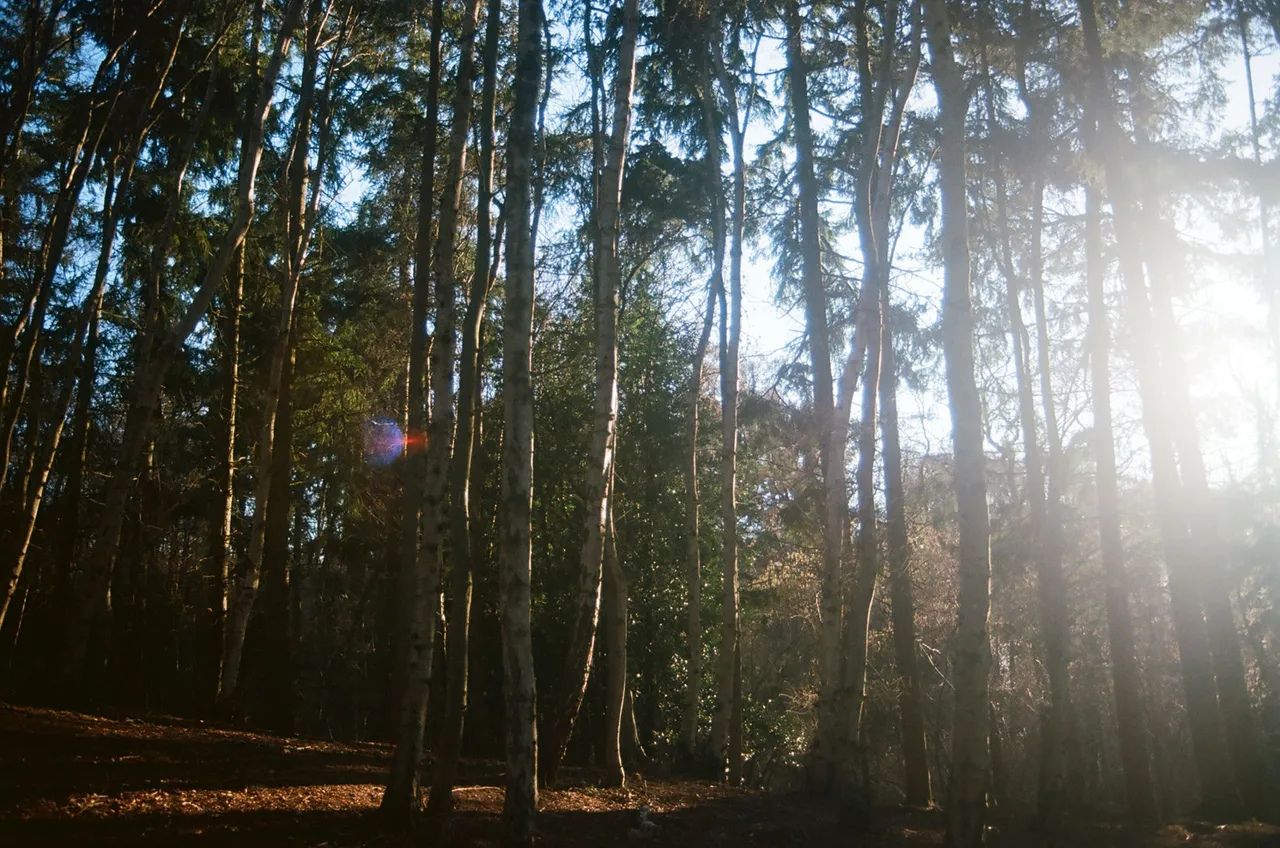
I can't recall which lens I used to shoot these photographs, but from a glance I'd assume they were all taken with my Canon FD 50mm 1.8 lens, alongside my Canon AE-1 35mm film camera. There's a lot of weak images in my opinion, but some of them still have a lot of soul to them in their colours and compositions.
The truth is, I had very little idea of how to go about shooting in this environment. I hadn't really shot photographs inside a forest before. I wasn't all that sure of how to go about choosing subjects that felt worthy of being captured, so much of these images are simple experiments not only of the film stock, but of shooting in a forest in general.

Forests in England are usually quite small, or at least very much controlled. You'll find many signs, barriers, and pathways which bend around the trees and take you through different areas. I wasn't all that interested in these, they felt a bit too manufactured to be of any interest for a photograph, but I did notice that this particular framing had some nice lines of interest that would bend through the frame and disappear into the horizon.
Usually this would be referred to as leading lines, where the image contains lines which instantly grasp a viewer's attention and lead them through the image. So, I used what I knew prior for something simple here.
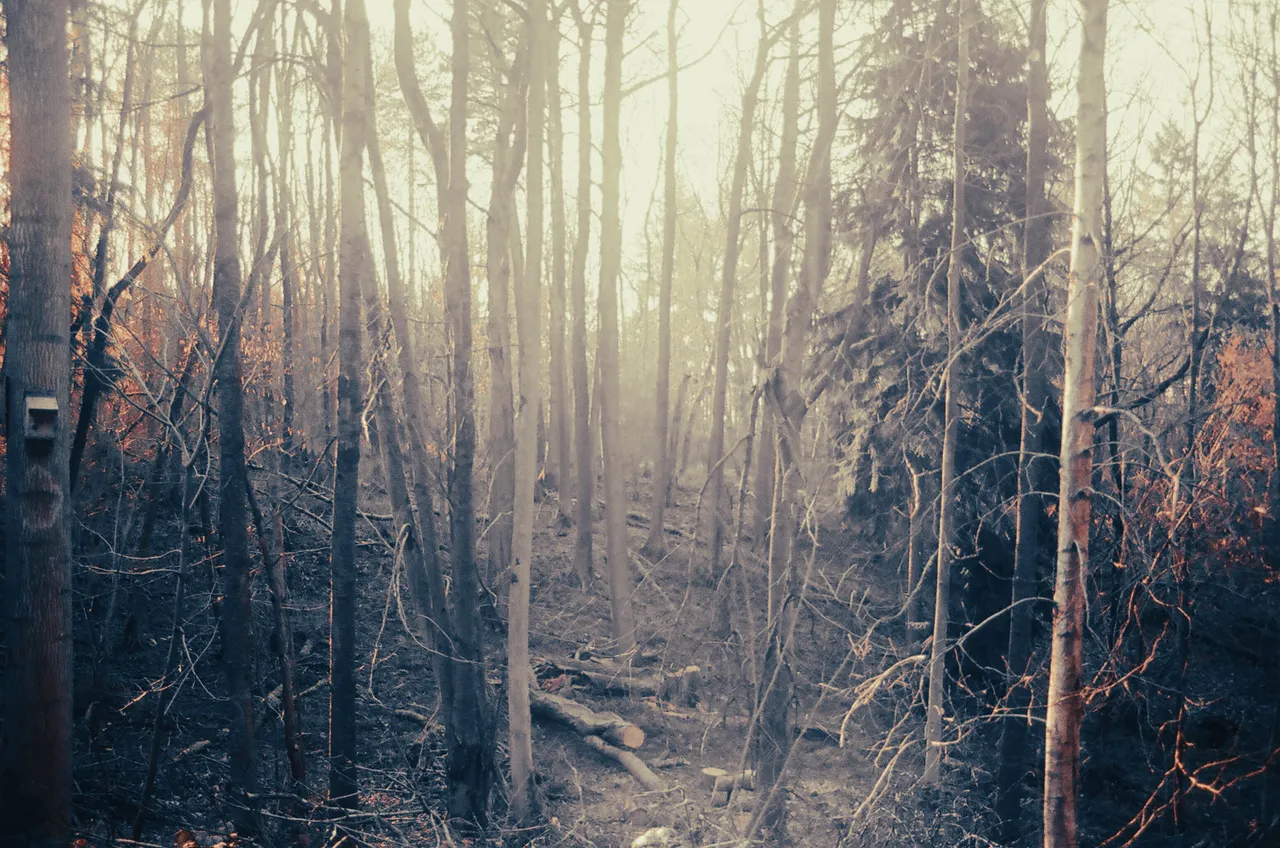
Deeper into the forest there's more interesting levels of depth. Taller trees with less space on the forest floor. Fully controlled by nature aside from the odd remains of prior trees that were cut down elsewhere. Those who maintain these forests often clear new space on the forest floor by removing trees that block sunlight from reaching smaller plants and life.
They then place these logs in the depth of the forest for the encouragement of new growth and habitats for animals.
This image in particular came out in quite an interesting manner: it's quite muted, dark but holding some orange. There's a large white line that runs through the middle, either from an error in processing the 35mm film stock or from general degradation of the film. Typically, poor processing results in whiter lines or blue streaks from chemicals.
A light leak is more so a red line that people often use in their Instragram filters -- if only they knew that it was actually the mark of doom for a camera.
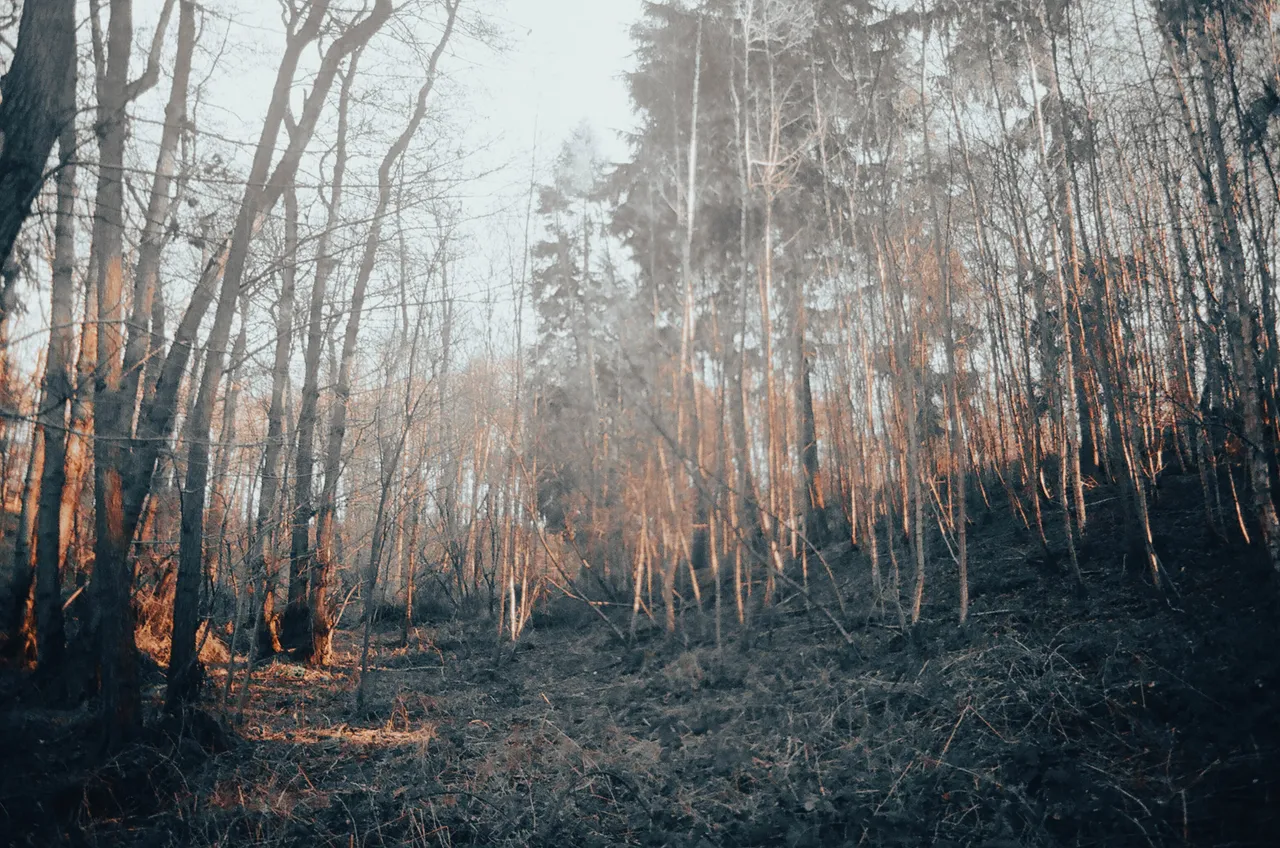
This image is one of my least favourites. It has the sloping line which serves as some form of composition, but it isn't all that interesting to me. The colours are nonexistent and there isn't much of interest in the frame. Though I do like that this and the image above almost hold some western styling. It reminds me a bit of Red Dead Redemption 2's photography mode!
This was at the time of day where the sunlight was starting to spread across the trees, hitting their colours with a highlight of orange glow.
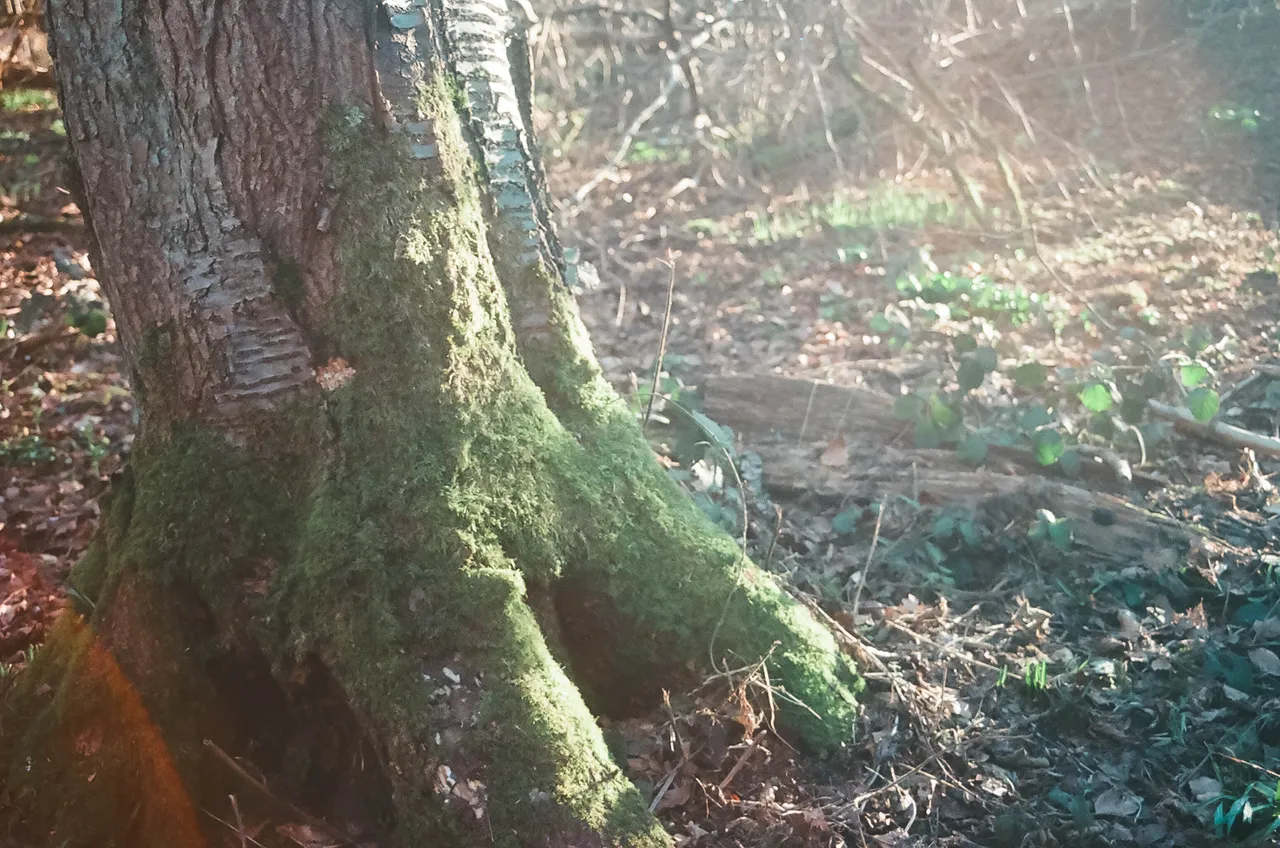
With no certainty of how this film stock would display colour, I tried to capture stronger colours as a test. In this photograph, my focus was on the moss that was slowly accumulating at the roots of this leaning tree. I was hoping, at the time, that the aperture used alongside the 50mm focal length, would create some nice bokeh and depth between the tree and the background. Though the film stock's expired nature and type didn't reallty work out all that well.
Though the light in reality was much nicer, with more contrast to it. It hit the moss in a really beautiful way that produced such a strong green. Perhaps Kodak Colorplus 200 film stock would've been more appropriate for this.
The line to the bottom left is also not the light leak that was mentioned above, but a result of the angle in which sunlight is entering the lens. There's another image below which displays this in a more obvious way.
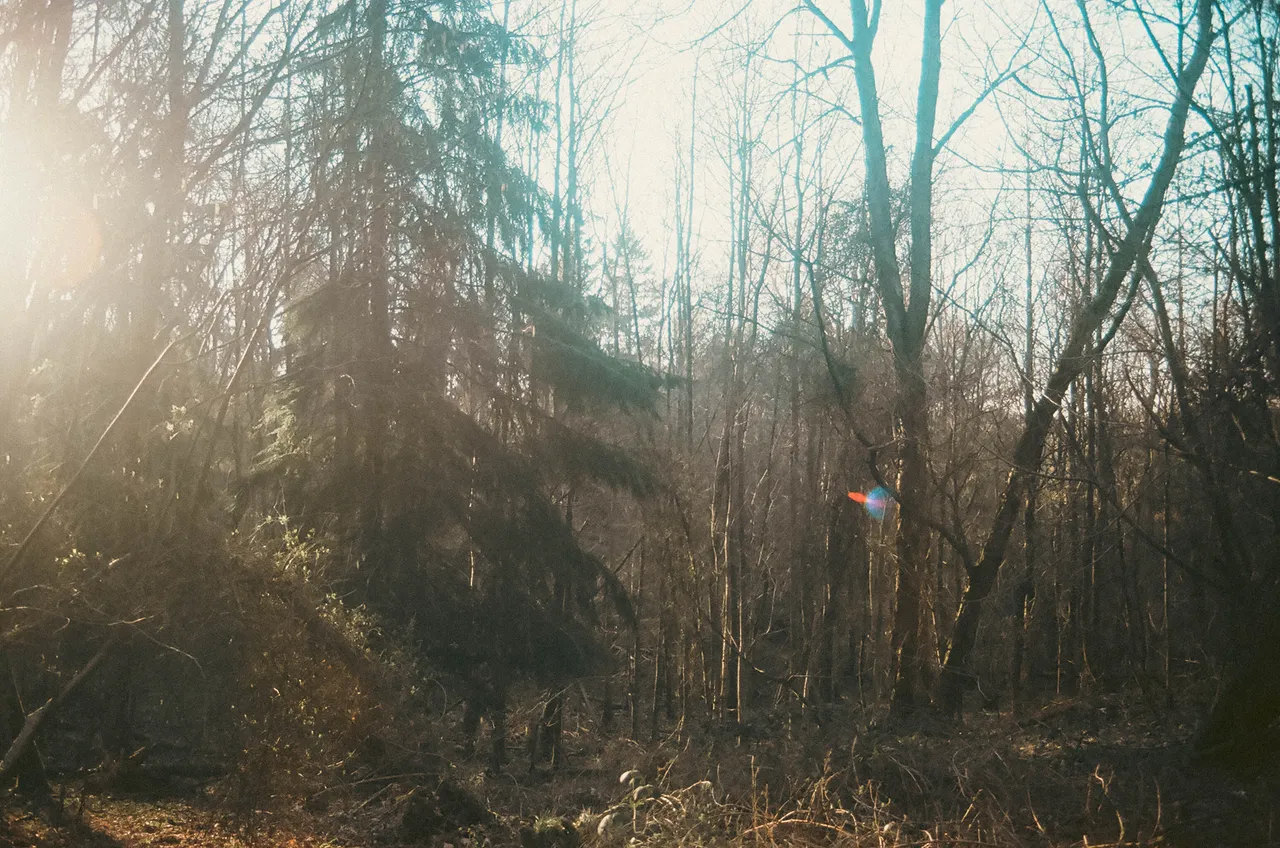
And here we've reached the end of these photographs. A fun little experiment shooting expired film stock, and a new film stock I hadn't tried before. It's always fun trying new things with 35mm film, and the ways in which the film stock displays an environment is what draws me to it over digital photography.
Some of these photographs have a lot of aesthetic to them. I really like the first few. Certainly not my best works, but ones that I'm still proud to share with everyone here on Hive. I hope you enjoyed looking at them as much as I enjoyed taking them!